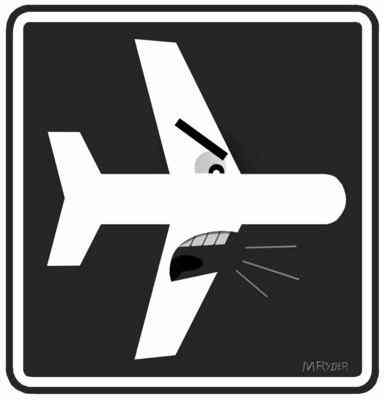- MENU
- HOME
- SEARCH
- WORLD
- MAIN
- AFRICA
- ASIA
- BALKANS
- EUROPE
- LATIN AMERICA
- MIDDLE EAST
- United Kingdom
- United States
- Argentina
- Australia
- Austria
- Benelux
- Brazil
- Canada
- China
- France
- Germany
- Greece
- Hungary
- India
- Indonesia
- Ireland
- Israel
- Italy
- Japan
- Korea
- Mexico
- New Zealand
- Pakistan
- Philippines
- Poland
- Russia
- South Africa
- Spain
- Taiwan
- Turkey
- USA
- BUSINESS
- WEALTH
- STOCKS
- TECH
- HEALTH
- LIFESTYLE
- ENTERTAINMENT
- SPORTS
- RSS
- iHaveNet.com: Travel
If Europe Can Handle In-Flight Cellphone Use, So Can America
By Carl Biersack

In-Flight Cell Phone Use (c) M. Ryder
Carl Biersack is executive director of the
On a recent flight, most likely there was a moment when you wished that you could immediately reach a person on the ground or that they could reach you. If you fly on one of the 20 equipped carriers around the world, this is no longer a problem. Many Americans flying on these thousands of overseas flights are surprised and pleased at how the service is treated as routine by passengers and cabin crews.
As the United States stands still, the rest of the world is rapidly gaining access to full in-flight connectivity. In fact, by the end of this year, nearly 14 million airline passengers will have flown on some 100,000 flights to more than 50 nations and nearly 300 cities, during which they had the opportunity to receive or make a call with their own cellphone.
Despite predictions that in-flight cellphone usage would lead to Armageddon, the global rollout has been just the opposite. In 20 months of global usage, there has not been one reported incident or problem. In fact, 93 percent of passengers who flew on an in-flight communication-equipped aircraft want all jets so equipped. So why not U.S. carriers? Backers of a proposed congressional ban claim that, unlike their international counterparts, Americans can't handle the use of cellphones on domestic flights.
There are a number of reasons why call cacophony is not happening elsewhere: First, passengers pay international roaming rates, typically around $5 per minute. This has proven to be an effective form of self-discipline. Data from actual use overseas show that the average call duration is under two minutes. Second, usage is restricted to six lines at any one moment once the aircraft reaches cruising altitude--a function of available satellite bandwidth. In fact, the available data also demonstrate that all six lines are rarely in simultaneous use.
Additionally, air carriers have developed effective procedures, such as turning the service off on overnight flights, that ensure that in-flight communication does not disturb others. The service is not operational during safety instructions, takeoff, and landings; thus, not competing with the crew's instructions. Passengers recognize that calls before takeoff are not their last opportunity until landing because they know service returns at cruising altitude, so the cabin's communications are not frantic.
Finally, it has been obvious to passengers that a plane seat is not a private phone booth, and they exercise self-censorship.
These factors, plus the cabin's ambient noise, even prompted Great Britain-based travel journalist Charles Starmer-Smith, reporting recently in the
Another myth that must be dispelled is that the service presents a safety hazard. This is simply not the case. The issue of interference with onboard avionics and ground communication systems has been put to rest. This in-flight communication is provided by using dedicated satellite infrastructure that delivers clear and secure communications through partnerships with airframe manufacturers, air carriers, and the communication industry. This service enables voice, texting, Internet, and gaming and permits passengers to remain linked to family and coworkers throughout their air transit experience, offering a whole new level of convenience and accessibility.
Before securing approval for use in overseas markets, the technology was put through rigorous evaluations by the foreign equivalents of our
Another troubling aspect of the proposed ban is that it uses a sledgehammer to kill an insect. There are other ways to deal with the isolated rude passenger. Meanwhile, bans should be reserved for things that truly are a health and safety risk, like smoking. If one asks passengers about genuine nuisances, the list includes a crying baby, an overweight person, even body odors. If
Lastly, the proposed ban is just bad public policy. It would pick marketplace winners and losers and decide which communications technologies can be used and which cannot--decisions better made by consumers. The ban would ensure that the older seat-back phones are the only option for voice communications on flights. At the same time, it would attempt to ban new satellite-based infrastructure and Voice Over Internet Protocol, or VOIP, in flight. Now that WiFi is available on many U.S. flights, anyone with a laptop can make a phone call. Short of banning laptops outright or asking flight crews to become the laptop police, this approach is not feasible.
The proposed ban is based upon the incorrect assumption that everyone else on the planet is just more polite than we are and that American flight crews cannot maintain cabin decorum as their foreign counterparts have done and continue to do every day. As with all technology advances, Americans can and will rapidly learn to make the necessary etiquette adjustments.
Having more options for communication adds enjoyment and productivity to our lives, and this service can be safely extended to our time at 30,000 feet. America is ready to join the rest of the world when it comes to in-flight communication connectivity.
Allowing Cellphones In-Flight Would Make Air Travel Even Worse
© U.S. News & World Report
AUTOS | HOBBIES | EDUCATION | FAMILY | FASHION | FOOD & RECIPES | HOME DECOR | RELATIONSHIPS | PARENTING | PETS | TRAVEL | WOMEN
Travel | If Europe Can Handle In-Flight Cellphone Use, So Can America